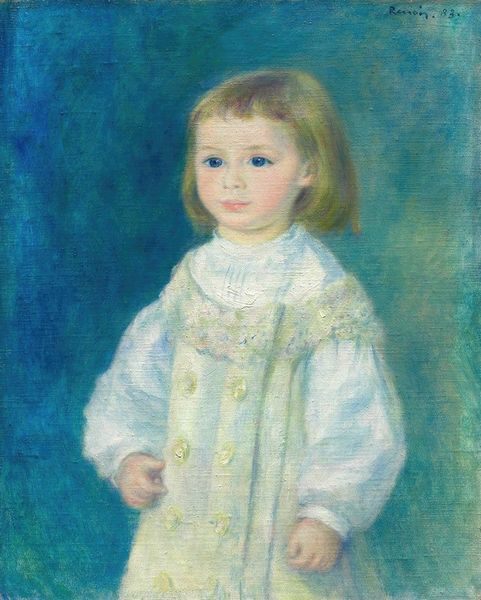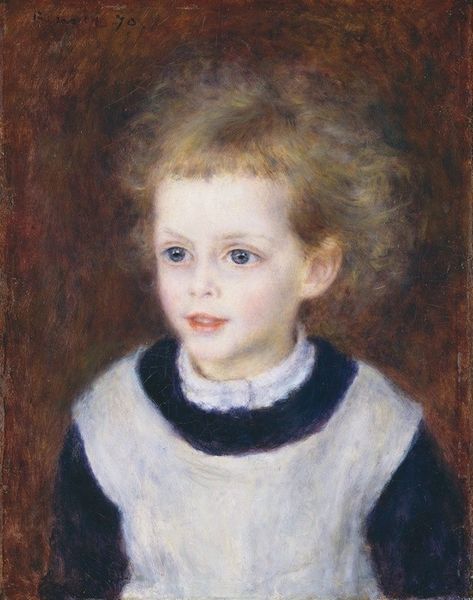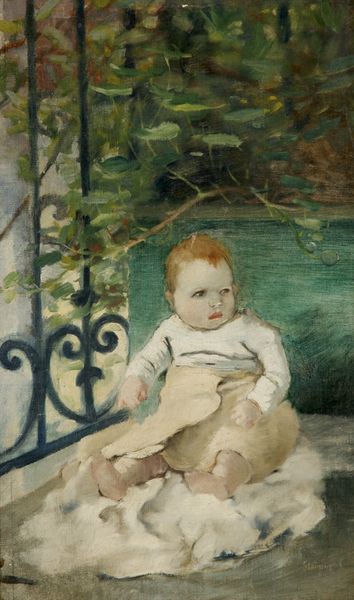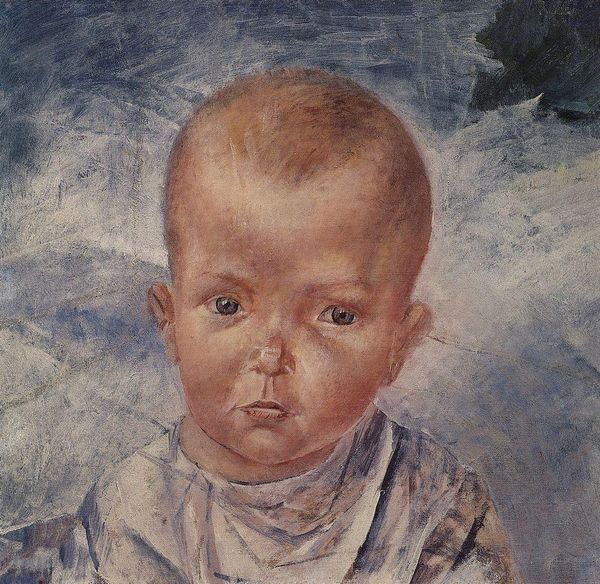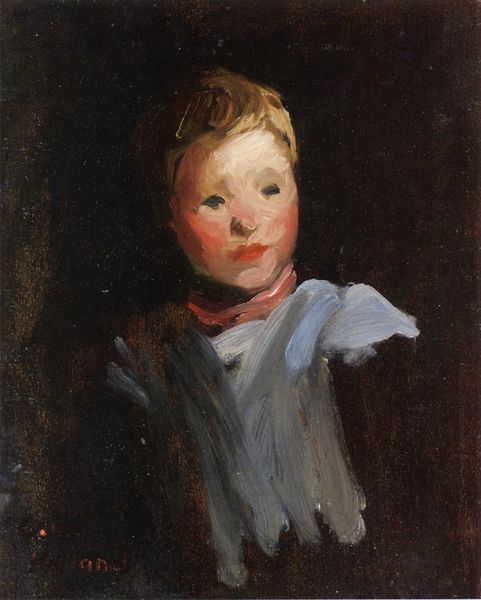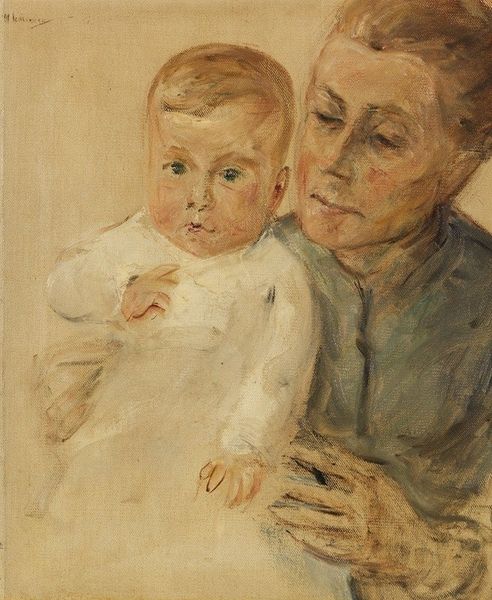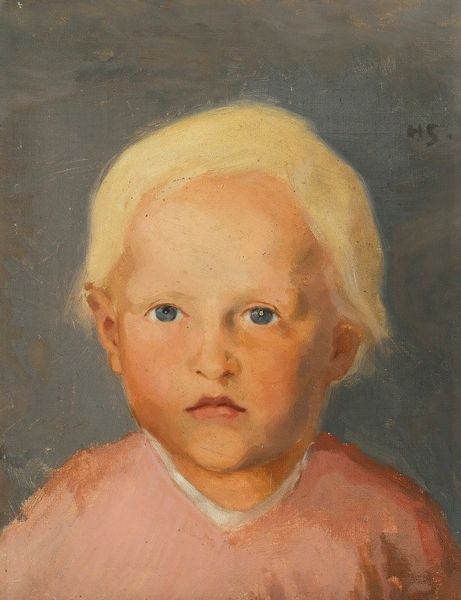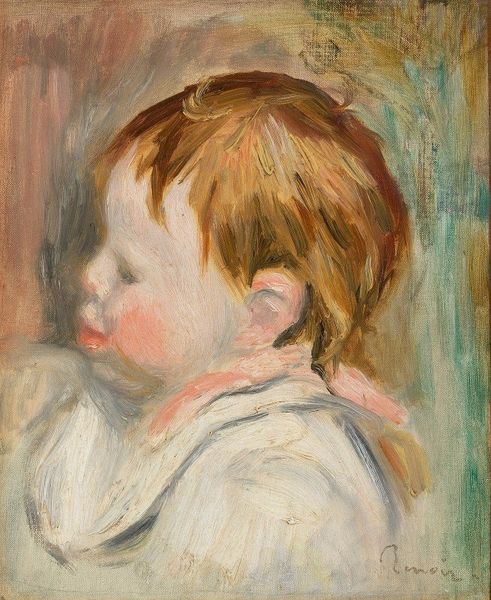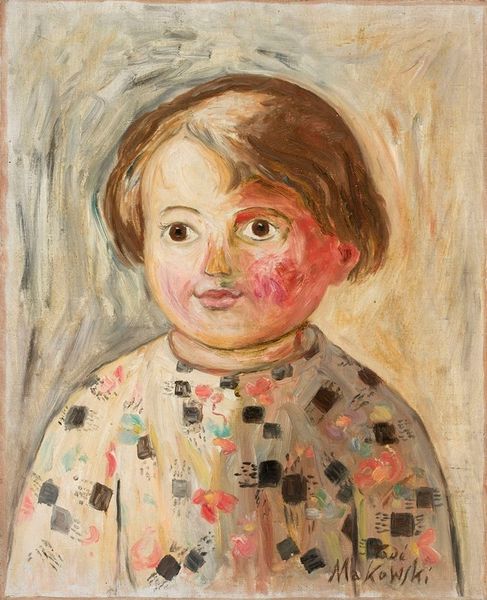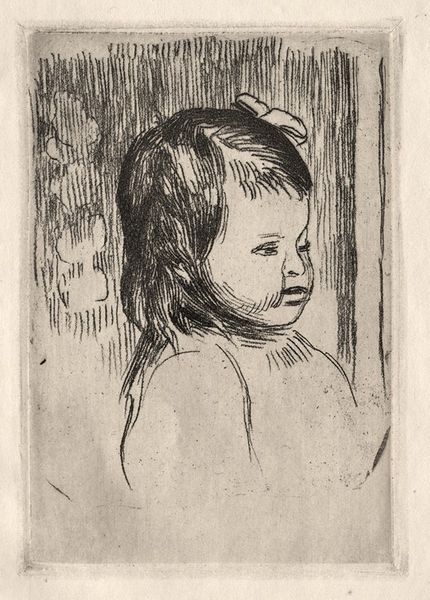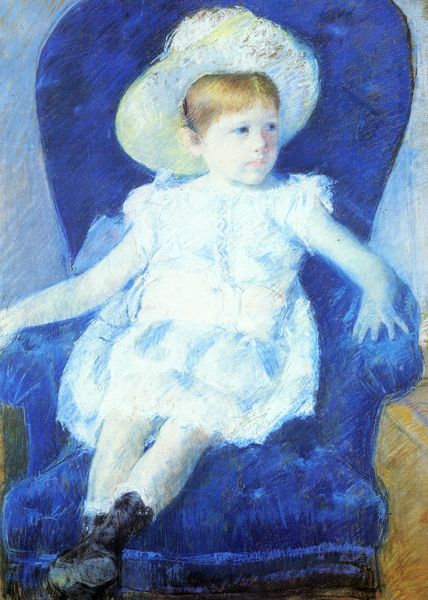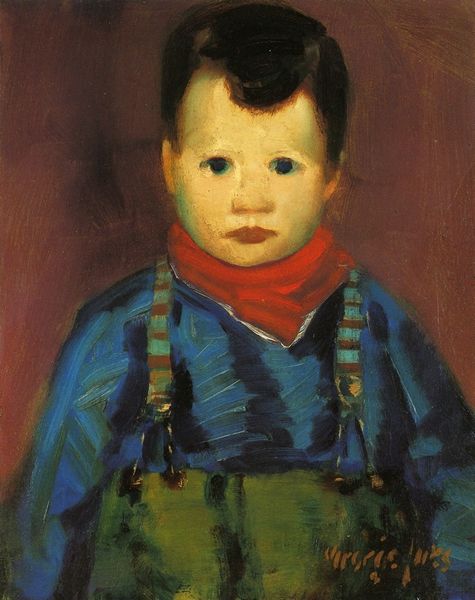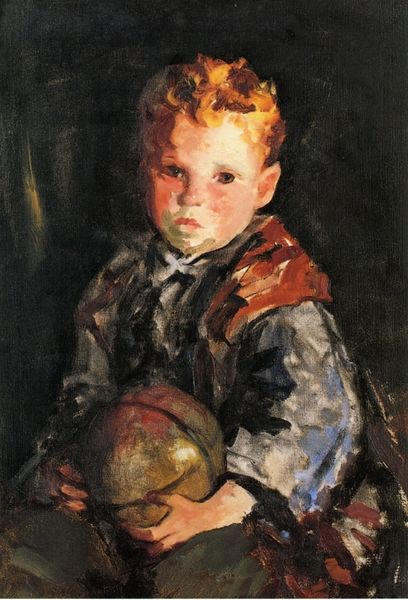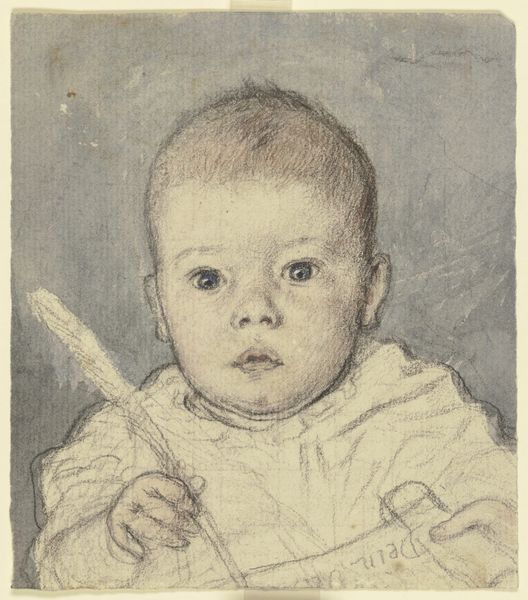
Copyright: Public domain US
Editor: This is Tsuguharu Foujita’s "Portrait of a Little Girl," painted in 1918. The figure almost seems to blend into the background, and has an understated mood despite its direct gaze. I’m curious, how do you interpret this painting? Curator: Considering Foujita's background and artistic tendencies, one cannot ignore the impact of Japonism and modernism in this work. The muted palette and flattened space reject traditional Western notions of depth and perspective. Have you observed the delicate outlining of the subject? Editor: Yes, I noticed how the dark lines seem to define the shape of the little girl. Does that choice emphasize the two-dimensionality even more? Curator: Precisely. Furthermore, examine the nuanced use of color. The artist isn't aiming for photorealistic representation. The subtle variations in tone across the girl’s dress, for instance, speak more to formal relationships than to descriptive accuracy. Are you familiar with "peinture à l'huile au lait"? Editor: I’m not. Could you explain? Curator: It translates as “oil paint with milk”. Foujita added milk to his paint, thus obtaining a unique velvety texture, which lends itself perfectly to capture this almost melancholic stillness. How would you say that texture influences the emotional impact? Editor: It's intriguing to think about that level of formal refinement! The almost ethereal texture in turn imbues the artwork with the aforementioned understatement. Curator: Indeed. Through formal elements—line, color, and texture—the artist conveys something beyond simple representation, achieving a distinctly modern aesthetic, yet evoking something profound and intimate. Editor: I’ve definitely gained a deeper appreciation for how the form enhances its emotive power! Thanks!
Comments
No comments
Be the first to comment and join the conversation on the ultimate creative platform.
